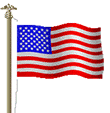


![]() DE387
DE387
![]() WDE487
WDE487
![]() DER387
DER387

|
The following information is taken from
the back of a flyer, which was used in Taiwan?
During the early years of World War Two,
destroyers were used by the Navy as escorts to
guard convoys of transport ships against
submarine attacks. But destroyers were costly
ships that took too long to build.
To combat the German U-Boat menace, inexpensive ships with relatively simple construction were needed immediately. From this concept the Destroyer Escort, or DE, was born. The DE's were diesel-powered, highly maneuverable, and designed from the keel up for antisubmarine warfare. They were ships built to fulfill a basic need of U.S. Naval forces and became important factors in winning the battle in the Atlantic. The USS VANCE (DER-387), named for JOSEPH W. VANCE, is one of the ships that came out of the needs of war. She was built by the Brown Shipbuilding Company of Houston, Texas end commissioned on November 1, 1943. VANCE's first two years of service were spent on escort duty in the Atlantic. During this period she helped sink a German submarine off Oran, Algeria (1944) and capture a sub and its crew near the Azores (1945). Shortly after the end of the war, VANCE was decommissioned and placed in the Reserve Fleet at Green Cove Springs, Florida. In 1952, VANCE was loaned to the U.S. Coast Guard and recommissioned as USCGC VANCE WDE487. She served during the Korean war on Ocean Station "QUEEN" and was homeported at Pearl Harbor, HI. In 1954, VANCE returned to San Diego, CA. She was decommissioned and returned to the Navy. (added to fill in the facts of VANCE's history) Vance lay dormant in mothballs for a decade. In 1956, changing aspects of national defense made her needed once again. The speed of aircraft in 1956 had almost tripled speeds of World War Two. The increased speed of these aircraft left a gap in the early detection of planes approaching the United States. To fill the gap, the Navy decided on sea-going radar picket stations. The destroyer escorts proved to be ideal floating radar stations. They possessed tremendous endurance and were perfectly suited as mobile platforms for the new long-range radar and communications equipment. VANCE was withdrawn from the Reserve Fleet and fitted out with extensive electronics equipment. Along with her new gear she received the designation DER...radar picket ship... and was recommissioned. VANCE's first home port as a DER was Seattle, Washington, She operated out of her home port for two years patrolling the Pacific as part of the seaward extension of the Distant Early Warning (DEW) Line. In this capacity VANCE was one of a network of stations which formed an electronic umbrella over the United States. The umbrella was a radar barrier that stretched from Hawaii, across Canada, Greenland, Iceland and the North Atlantic to Great Britain. In 1958 VANCE changed home ports and operated out of Pearl Harbor, Hawaii. She continued to serve as an extension of the DEW Line, patrolling between Hawaii and the Allelutian Islands. VANCE left her patrol duties in 1961 to participate in Operation Deep Freeze. She operated under the Commander of Navel Support Forces Antarctica assisting South pole explorations until 1962. Since April 1965 VANCE has served as a unit of the United States Seventh Fleet. During this time, she has participated in Market Time Operations off the coast of Vietnam. She was assigned additional duties of patrolling the Formosa Straits for the Taiwan Defense Forces in June 1967. |